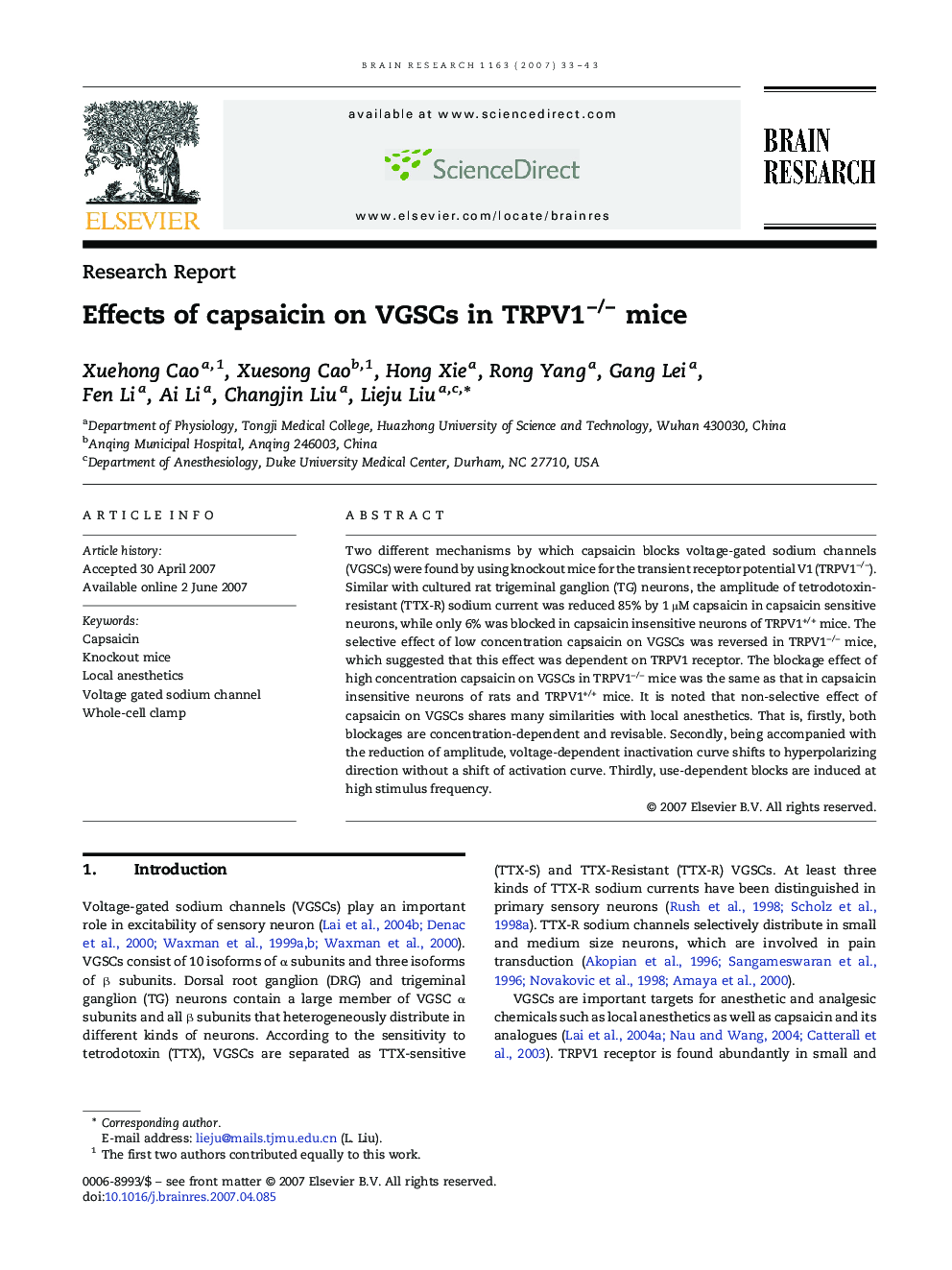| Article ID | Journal | Published Year | Pages | File Type |
|---|---|---|---|---|
| 4330774 | Brain Research | 2007 | 11 Pages |
Two different mechanisms by which capsaicin blocks voltage-gated sodium channels (VGSCs) were found by using knockout mice for the transient receptor potential V1 (TRPV1−/−). Similar with cultured rat trigeminal ganglion (TG) neurons, the amplitude of tetrodotoxin-resistant (TTX-R) sodium current was reduced 85% by 1 μM capsaicin in capsaicin sensitive neurons, while only 6% was blocked in capsaicin insensitive neurons of TRPV1+/+ mice. The selective effect of low concentration capsaicin on VGSCs was reversed in TRPV1−/− mice, which suggested that this effect was dependent on TRPV1 receptor. The blockage effect of high concentration capsaicin on VGSCs in TRPV1−/− mice was the same as that in capsaicin insensitive neurons of rats and TRPV1+/+ mice. It is noted that non-selective effect of capsaicin on VGSCs shares many similarities with local anesthetics. That is, firstly, both blockages are concentration-dependent and revisable. Secondly, being accompanied with the reduction of amplitude, voltage-dependent inactivation curve shifts to hyperpolarizing direction without a shift of activation curve. Thirdly, use-dependent blocks are induced at high stimulus frequency.
